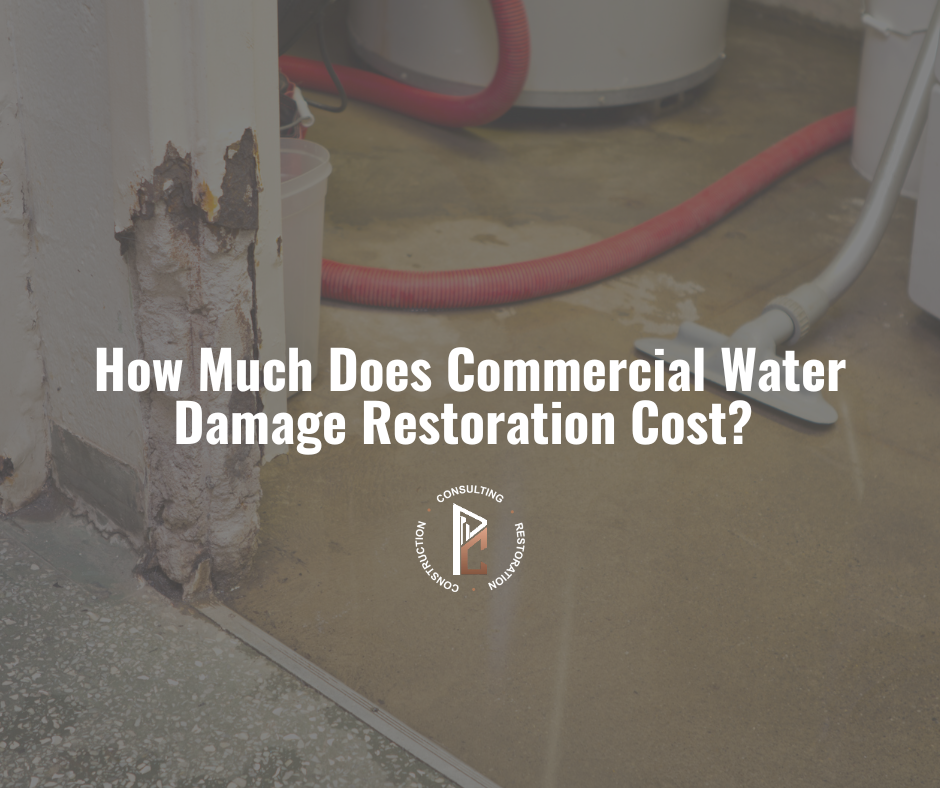
How Much Does Commercial Water Damage Restoration Cost? A Complete 2025 Guide
What Commercial Water Damage Restoration Actually Costs
Cost Factors We See Most Often
What Drives Commercial Water Damage Costs?
Water Category Classification
Damage Classification and Complexity
Commercial-Specific Cost Drivers
HVAC System Restoration
Commercial HVAC systems often require extensive cleaning, sanitization, and potential component replacement. We frequently need to assess ductwork throughout multiple floors, clean or replace air handling units, and ensure air quality meets commercial standards before reoccupation.
Electrical System Impact
Commercial electrical systems are more complex than residential installations. Water damage often affects panels, three-phase power systems, emergency lighting, and specialized equipment connections. Code compliance requirements add another layer of complexity and cost.
Specialized Flooring Systems
Commercial properties use flooring materials that require different restoration approaches than residential carpeting or hardwood. VCT removal and replacement, specialty commercial carpeting, industrial flooring systems, and concrete treatments all require specialized knowledge and equipment.
Regulatory Compliance Requirements
Building Code Compliance: Commercial properties must meet International Building Code standards, not the simpler residential codes. When restoration work affects structural elements, electrical systems, or accessibility features, current code requirements apply.
Timeline Impact on Total Investment
Emergency Response Phase
Mitigation and Drying Phase
Restoration and Reconstruction Phase
Regional and Market Factors
Geographic Cost Variations: We’ve observed significant cost variations across our nationwide service area. Major metropolitan areas typically see costs 20-40% above national averages, while rural markets often see costs 10-20% below average. However, rural areas may experience longer response times, which can increase total damage.
Seasonal Demand Impact: Peak storm seasons often result in 15-30% premium pricing for emergency services due to increased demand. Winter months can increase complexity when dealing with frozen pipe damage and heating system issues.
Insurance Coverage and Your Investment
What Commercial Policies Typically Cover
Common Out-of-Pocket Expenses
Hidden Costs That Impact Your Business
Business Interruption Impact
Secondary Damage Prevention
How to Minimize Water Damage Restoration Costs
Immediate Response Actions: Stop the water source if safely possible, contact professional restoration services immediately, document everything for insurance purposes, and begin emergency mitigation to prevent further damage.
Contractor Selection Impact: Choosing experienced commercial restoration contractors often reduces total project costs through faster restoration timelines, proper drying techniques that prevent secondary damage, accurate damage assessment that maximizes insurance recovery, and code compliance expertise that avoids costly corrections.
Get Expert Assessment and Transparent Pricing
- 24/7 Emergency Response: (866) 215-8048
- Professional Consultation: info@pro-commercial.com
- Service Area: Nationwide coverage across all 50 states
- Business Hours: Monday-Friday, 8:00 AM – 5:00 PM CST

